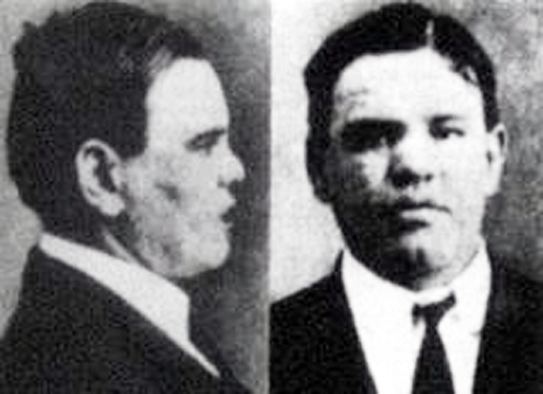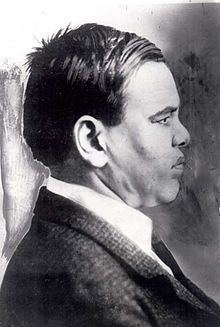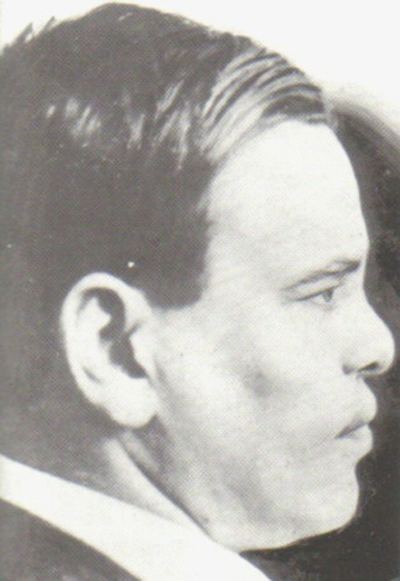Full Name Edward Eastman Name Monk Eastman | Conviction(s) 1904; 1912; 1915 Cause of death Gunshot | |
 | ||
Other names Joseph Morris {August 1903}William Delany {December 1903} and {October 1917 enlistment in US Army};John Marvin {February 1914} Occupation thug; soldier; dockworker Criminal charge 1901 reported wounded in gang fightDecember 1902 arrested on assault charge {acquitted}August 1903 arrested after gunfight with rival gang-charged with assault but not held1903 arrested under own name in Freehold N.J on charge of beating up coachman James McMahon {discharged}December 1903 arrested after Michael Donavon killed after gang fight-discharged; arrested twice as "suspicious person" but not heldApril 1904 arrested for assault-sent to Sing Sing for 10 yearsMay 1912 arrested for manufacturing and using opium-sent to Sing Sing prison for eight monthsFebruary 1914-arrested as "John Marvin" in Buffalo New York on charge of Bulgary {discharged}November 1915-arrested in Riverdale New York on charge of stealing silver in Albany New York-sent to Dannemora for two years and eleven months-released October 1917 Criminal status served sentence-deceased Similar People Nathan Kaplan, Frank Costello, Joe Gallo, Paul Castellano, Elisa Izquierdo | ||
Gangster monk eastman
Edward "Monk" Eastman (1875 – December 26, 1920) was a New York City gangster who founded and led the Eastman Gang, which became one of the most powerful street gangs in New York City. His aliases included Joseph "Joe" Morris, Joe Marvin, William "Bill" Delaney, and Edward "Eddie" Delaney. Eastman is considered to be one of the last of the 19th-century New York gangsters who preceded the rise of Arnold Rothstein and more sophisticated, organized criminal enterprises such as Cosa Nostra.
Contents
- Gangster monk eastman
- Monk eastman our gotham wall street scuffle hd
- Early life
- Criminal career
- Prison
- WWI military service
- Final years and death
- Eastmans ethnicity
- Representation in other media
- References

Monk eastman our gotham wall street scuffle hd
Early life

Monk Eastman's background is a subject of debate. City records show, as documented by crime authors such as Patrick Downey, Ron Arons, and Rose Keefe, that Monk was born Edward Eastman in 1875 in the rowdy Corlear's Hook section of lower Manhattan to Samuel Eastman, a Civil War veteran and wallpaper-hanger, and his wife Mary Parks. By the time Monk was five, his father had abandoned the family. Mary moved with her children to her father George Parks' home on the Upper East Side.

According to the 1880 United States Census, 5-year-old Edward Eastman was living on East Seventy-Fifth St., in Manhattan. He and his family lived with his grandfather George Parks, age 68, who then worked in a dry goods store. George was born in New York, as were both his parents. In addition to Edward, the Eastman family included Mary Eastman, age 35; and daughters Lizzie, age 10; Ida, age 8; and Francine age 3. Everyone was born in Manhattan, with the exception of Lizzie, who was born in California. Both George Parks and his daughter Mary Eastman were recorded as having been divorced.

In the 1870 U.S. census, Mary Eastman was living on Cannon St. in the Lower East Side of Manhattan with Samuel Eastman, age 40, born in New York and working as a paper hanger. Living with them were their children Lizzie and Willie, age 3, born in New York. Willie likely died young, as he was not listed with the family in 1880. In the 1860 census, Samuel Eastman was living in Manhattan in the household of Thomas McSpedon, from a prominent old NYC family. Thomas' firm McSpedon & Baker, Pine Street, NYC, was the official NYC printers. McSpedon served as an Alderman in NYC and Fire Marshall for NYC during the mid 19th century. Eastman worked as a paper hanger.
In the 1900 census, Mary Eastman lived in Queens on Curtis Ave. with her daughters Elizabeth and Francine and their families. Edward Eastman was not listed in any additional censuses after 1880 (the 1890 records were lost in a fire at the National Archives.)
Monk's first documented arrest didn't occur until after his grandfather had died. At some point Parks helped his grandson set up a pet shop on Broome Street. For years after being known as a gangster, Eastman listed "bird seller" as his legitimate occupation on government forms. At some point he returned to the Lower East Side and became involved with the many gangs of the area. Operations included a bike rental racket.
Criminal career
In 1898 Monk Eastman was arrested and convicted under the alias William Murray (one of the many Irish aliases Eastman employed). He spent three months on Blackwell's Island for larceny. During this time, he belonged to a gang of pimps and thieves known as the Allen Street Cadets. Herbert Asbury reports that Eastman was known to have had a messy head of wild hair, wore a derby two sizes too small for his head, sported numerous gold-capped teeth, and often paraded around shirtless or in tatters, always accompanied by his cherished pigeons. In time, Monk's reputation as a tough guy (despite his squat five-foot-six inch frame) earned him the job of "sheriff" or bouncer at the New Irving Hall, a celebrated club on Broome Street, not far from his pet shop. At the New Irving Hall and Silver Dollar Smith's Saloon, Eastman became acquainted with Tammany Hall politicians, who would eventually put him and his cohort to work as repeat voters and strong-arm men.
Eastman's greatest rival was Paul Kelly (Paolo Antonio Vaccarelli), immigrant leader of the Italian Five Points Gang. The warfare between these two gangs reached a fever pitch on September 17, 1903, with a protracted gun battle on Rivington Street involving dozens of gangsters. One man was killed and a second reported fatally wounded and numerous innocent civilians were injured. Members of the Eastman gang were arrested.
Tammany Hall worked closely with both Kelly and Eastman. Its officials grew tired of the feuding and the bad press generated when civilians were killed or injured in the cross-fire. In 1903, Tammany Hall set up a boxing match between Eastman and Kelly in an old barn up in the Bronx. The fight lasted two hours, with both men taking hard punishment before it was called a draw.
Monk Eastman lived at 221 E. 5th Street at the turn of the 19th/20th century, just about two blocks from Paul Kelly's New Brighton Social Club at 57 Great Jones Street.
Prison
On February 3, 1904, Eastman tried to rob a young man on 42nd Street and Broadway in Manhattan. As he was followed by two Pinkerton agents hired by the man's family to keep him out of trouble, the agents intervened. Eastman shot at them while escaping, but was caught by policemen responding to the shooting. Tired of bad publicity from Eastman, Tammany Hall refused to help him. Later that year, Eastman was convicted and sentenced to 10 years in prison at Sing Sing penitentiary.
In 1909, Eastman was released after serving five years in prison. During his absence, the Eastman Gang had split into several factions; one of his top men, Zwerbach, was dead. Since none of the surviving gang factions wanted Eastman as their leader, he was effectively out of power. For several years, Eastman reverted to petty thievery. During this period, he became addicted to opium and served several short jail terms.
WWI military service
After the United States entered World War I in 1917, the 42-year-old Eastman decided to join the army. During his military physical, the doctor observed all the knife and bullet scars on Eastman's body and asked him which wars he had been in; Eastman replied, "Oh! A lot of little wars around New York". He served in France with "O'Ryan's Roughnecks", the 106th Infantry Regiment of the 27th Infantry Division. After Eastman's discharge in 1919, the Governor of New York, Al Smith, recognized his honorable service by restoring his U.S. citizenship (voting rights were removed with his conviction as a felon.)
Final years and death
After his discharge from the army, Eastman quickly returned to a life of petty crime. One of his partners was Jerry Bohan, a corrupt Prohibition agent. On the morning of December 26, 1920, Eastman and Bohan met with other men at the Bluebird Cafe in Lower Manhattan. Around 4:00 am, they argued over money, with Eastman and Bohan particularly at odds. When Bohan left, Eastman followed him and accused him of being a rat. Feeling threatened, Bohan quickly shot Eastman several times with his pistol.
Eastman was buried with full military honors in Cypress Hills Cemetery in Brooklyn, New York. Bohan was later convicted of his murder and served three years in prison.
Eastman's ethnicity
Because his criminal enterprise involved so many members of Jewish-American organized crime, Eastman is frequently depicted as a Jew himself (including by some newspapers of his own time), but his lineage appears to be Protestant English. In his book The Jews of Sing Sing, the writer Ron Arons notes that none of Monk's sisters (or his parents for that matter) were married in Jewish ceremonies, and his maternal grandfather George Parks died in a Baptist rest home. When Eastman was buried, his service was performed by a Methodist pastor.
